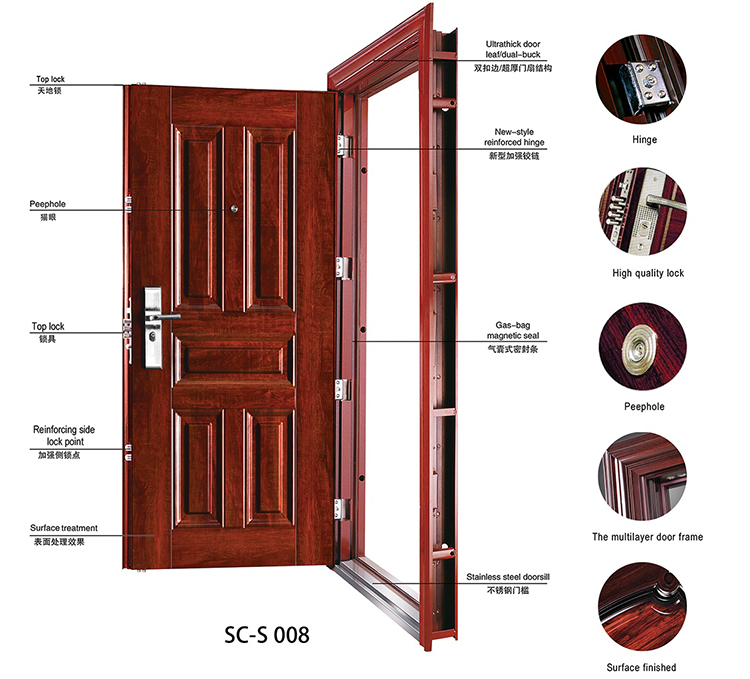Standard Door Sizes in the U.S. – A Complete Guide
If you’re replacing or installing a new door, knowing standard door sizes is essential. Doors come in different widths, heights, and thicknesses depending on whether they are interior, exterior, or specialty doors (like barn or pocket doors).
Most Common Standard Door Sizes
Most doors in U.S. homes follow these measurements:
| Door Type | Standard Width | Standard Height | Standard Thickness |
|---|---|---|---|
| Interior Doors | 28″, 30″, 32″ | 80″ (6’8″) | 1⅜” |
| Exterior Doors | 36″ | 80″ (6’8″) | 1¾” |
| Closet Doors | 24″, 28″, 30″ | 80″ or 96″ (8′) | 1⅜” |
| Garage Doors | 8′, 9′, 16′ (double) | 7′ | Varies |
1. Standard Interior Door Sizes
-
Height: 80 inches (6 feet 8 inches) – same as exterior doors.
-
Width: Most common are 28, 30, and 32 inches.
-
Bedroom & bathroom doors: 30″ or 32″
-
Closet & pantry doors: 24″ to 30″
-
-
Thickness: Usually 1⅜ inches, but thicker doors (1¾”) are used for wider or taller openings.
2. Standard Exterior Door Sizes
-
Height: 80 inches (same as interior doors). Some modern homes use 96″ (8′) doors for a grand entrance.
-
Width: Most entry doors are 36 inches (minimum for accessibility).
-
Secondary doors (back doors, garage entry): 32″ or 36″
-
-
Thickness: 1¾ inches for better insulation and security.
3. Standard Garage Door Sizes
-
Single-car garage door: 8 or 9 feet wide x 7 feet tall
-
Double-car garage door: 16 feet wide x 7 feet tall
-
Custom sizes are available for larger vehicles or unique home designs.
4. Specialty Doors (Barn, Pocket, French Doors)
-
Barn Doors: Typically 36″ to 72″ wide (sliding style).
-
Pocket Doors: 30″ to 36″ wide (slides into the wall).
-
French Doors: 30″ to 36″ per door (double doors = 60″ to 72″ total).
How to Measure a Door for Replacement
-
Width: Measure the door slab (not the frame) at the top, middle, and bottom. Use the smallest measurement.
-
Height: Measure from the floor to the top of the door.
-
Thickness: Measure the edge of the door.
Pro Tip: If installing a pre-hung door (with frame included), measure the rough opening (frame space) instead.
What If My Door Isn’t a Standard Size?
-
Older homes may have smaller doors (like 28″ wide).
-
Custom doors can be ordered to fit unique openings.
-
Adjust the frame if possible to fit a standard size.
Final Thoughts
Most doors follow standard sizes, but always measure carefully before buying. If you need a non-standard door, many companies offer custom options.
For more help, consult a door specialist or me to ensure the best fit for your home!








一个回复